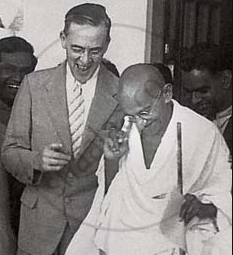Advertisements
Advertisements
प्रश्न
Which resolution was passed on 8th August, 1942 leading to a mass struggle on non-violent lines? State any two reasons behind the launching of this movement.
उत्तर
The Quit India Resolution was passed by the Congress Working Committee at Bombay on 8th Aug. 1942. This resolution led to the launching of Quit India Movement in 1942. While launching this mass movement, Gandhiji said, “We shall do or die. We shall either free India or die in the attempt.
Two reasons behind the lauching of Quit India Movement:
(i) Failure of Cripps mission: The Cripps mission came to India in March, 1942 to solve Indian problem. But its proposals gave nothing concrete to Indians. The feeling was that the Government was unwilling to concede to India the right of self-Govemment. The failure of Cripps mission created deep discontent in the country.
(ii) Threat of Japanese attack: During the World war II, the Allied forces including Britain suffered serious set-back in 1942. There was immediate danger of Japanese attack on India as Japanese forces reached up to North-Eastern borders of India. Gandhiji and other leaders were now convinced that the situation called for complete independence immediate- and unconditional.
According to Gandhiji, “India’s safety, and Britain too, lies in orderly and timely British withdrawl from India.” This feeling led to the launching of Quit India Movement in 1942.
APPEARS IN
संबंधित प्रश्न
The Quit India Resolution in 1942 was one of the final calls given by Gandhi for the British to leave India. Moving towards Independence, Lord Mountbatten’s Plan was significant. In this context, answer the following:
State two reasons for the launching of the Quit India Movement.
Name the ‘Mantra’, which was given by Gandhiji during Quit India Movement.
When did the individual Satyagraha campaign start?
Why was Sir Stafford Cripps sent to India in 1842?
What was the major cause of the failure of the Quit India Movement?
State any two important proposals of Crippse offer?
Why was the August offer made?
Japanese success in the East prompted the British Government to send the Cripps Mission to India. In this context, state the proposals of the Cripps Mission.
Mention the reasons why the proposals of the Cripps Mission were rejected.
Answer the following:
(i) Name the male personality in the picture with Gandhi given alongside.
(ii) Why Britain Prime Minister sent this gentleman to India?
